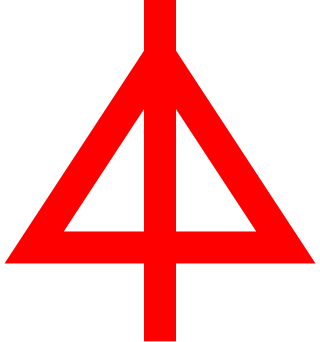
The 5th Panzer Division was an armoured division of the German Army during World War II, established in 1938.

The 13th Panzer Division was a unit of the German Army during World War II, established in 1940.

The 16th Infantry Division of the German Army was formed in 1934. On 26 August 1939 the division was mobilized for the invasion of Poland (1939). It participated in the Battle of France in August 1940. The division was then split, resulting in two independent units: The 16th Panzer Division and the 16th Motorized Infantry Division. Then later, from 1944 onward, combined with other non 16th elements, was known as the 116th Panzer Division.

The 2nd Panzer Division was an armoured division in the German Army, the Heer, during World War II.
The 21st Panzer Division was a German armoured division best known for its role in the battles of the North African Campaign from 1941 to 1943 during World War II when it was one of the two armoured divisions making up the Deutsches Afrikakorps (DAK).

The 29th Infantry Division was a unit of the German army created in the fall of 1936. It was based on the old Reichswehr 15th Infantry Regiment and drew its initial recruits from Thuringia. It was upgraded to 29th Motorized Infantry Division in the fall of 1937. The division was also known as the Falke-Division.

The 6th Panzer Division was an armoured division in the German Army, the Heer, during World War II, established in October 1939.

The 12th Panzer Division was an armoured division in the German Army, established in 1940.

The 4th Panzer Division was an armored division in the Army of Nazi Germany.
The 3rd Panzer Division was an armoured division in the German Army, the Wehrmacht, during World War II.
The 11th Panzer Division was an armoured division in the German Army during World War II, established in 1940.
The 19th Panzer Division was an armoured division in the German Army, the Wehrmacht, during World War II. It was created from the 19th Infantry Division.
281st Security Division was a rear-security division in the Wehrmacht of Nazi Germany. Established in 1941, the unit was deployed in German-occupied areas of the Soviet Union, in the Army Group North Rear Area. The unit was converted to an infantry division in 1945, while stationed in Courland.
The 6th Luftwaffe Field Division was an infantry division of the Luftwaffe branch of the Wehrmacht that fought in World War II. It was formed using surplus ground crew of the Luftwaffe and served on the Eastern Front from late 1942 to June 1944 when it was destroyed during Operation Bagration.

Hermann Leopold August von Oppeln-Bronikowski was an Olympic equestrian, winning a gold medal in the team dressage at the 1936 Olympics. He later served as a panzer general during World War II.

The 14th Panzer Division was an armoured division in the German Army during World War II. It was created in 1940 by the conversion of the 4th Infantry Division.

The 31st Infantry Division was a German infantry division of the Army during World War II. It participated in the invasion of Poland in 1939 then the invasion of France and the Low Countries in 1940. As part of Panzergruppe 2. of Army Group Centre, it was involved in the invasion of the Soviet Union in June 1941. After hard fighting throughout 1941 and 1942 it joined the 9th Army and fought in the Battle of Kursk in July and August 1943. Along with the rest of the 9th Army, the division conducted a fighting withdrawal for the remainder of 1943, during which it sustained heavy casualties. In the early stages of the Soviet Operation Bagration of June to August 1944, the 31st Infantry Division was destroyed, a fate which subsequently befell most of Army Group Centre. The division was officially disbanded on 18 July 1944.

The 15th Panzer Division was an armoured division in the German Army, the Wehrmacht, during World War II, established in 1940.

The 258th Infantry Division was an infantry unit of the German Army in World War II.

The 387th Infantry Division was an infantry division of the German Army during the Second World War, active from 1942 to 1944. It saw active service on the Eastern Front and was destroyed in fighting in Romania in August 1944.















